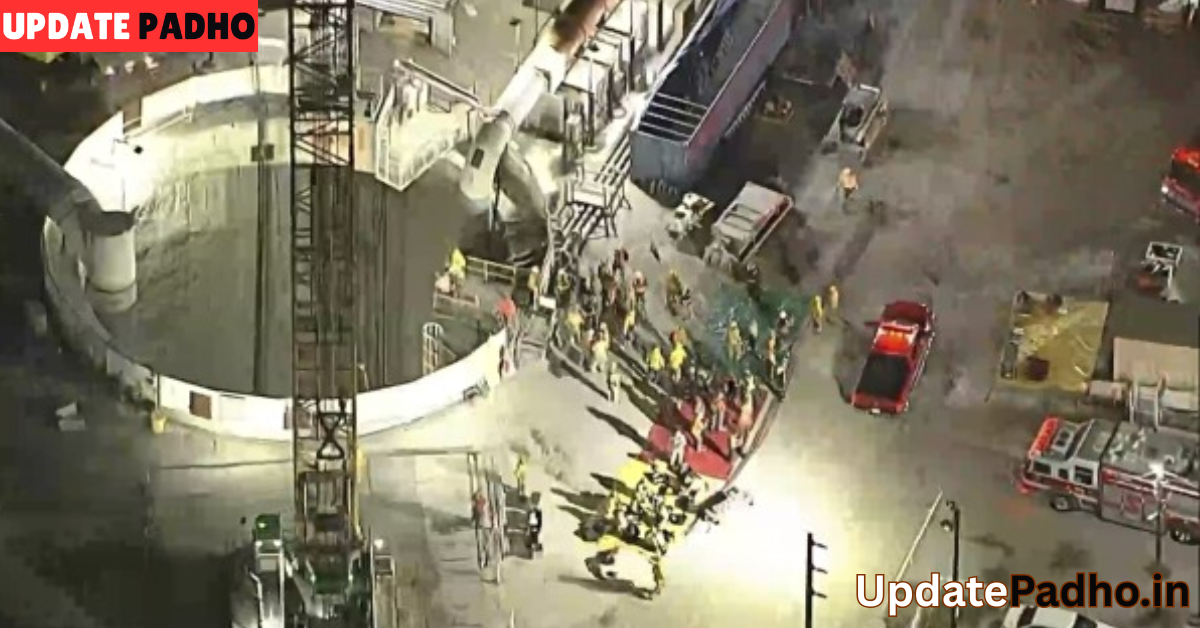A dramatic incident unfolded yesterday in Los Angeles as part of a tunnel construction site collapsed, trapping 31 workers underground. In what could have been a devastating situation, emergency responders acted quickly, and all workers were safely rescued, with no fatalities or serious injuries reported. The incident has raised important questions about tunnel safety protocols and the ongoing construction boom in the city.
The Collapse: What Happened?
Around midday on Monday, workers at a major tunnel construction site in Los Angeles were in the midst of completing a critical phase of an underground transit project. Reports suggest that a section of the tunnel’s temporary support structures buckled under pressure, causing part of the tunnel to cave in. The collapse left 31 workers trapped, though initial reports indicate that no one was in the immediate area of the full collapse.
As construction sites go, tunnels are inherently high-risk environments. Workers are often thousands of feet below the surface, dealing with a myriad of challenges from unstable soil conditions to unpredictable machinery malfunctions. Thankfully, in this case, a series of safety measures and quick decision-making ensured the workers were not seriously harmed.
Rescue Operation: A Swift and Coordinated Effort
The Los Angeles Fire Department (LAFD), along with city emergency responders and construction safety teams, launched a rapid rescue operation. According to Fire Chief Deirdre Smith, the team worked in close coordination to stabilize the tunnel and carefully extract the trapped workers one by one. Emergency medical technicians (EMTs) were on hand, treating any minor injuries and ensuring that all workers were safe.
The city’s Office of Emergency Services confirmed that all 31 workers were rescued within hours of the collapse, thanks to the prompt response of the first responders. “Our priority was the safety and well-being of the workers, and we are grateful that all of them were brought out without significant injury,” said Mayor Karen Bass in a statement released shortly after the rescue.
Safety Measures Under Scrutiny: Can Tunnel Projects Be Safer?
The collapse has sparked renewed conversations about the safety protocols surrounding large-scale infrastructure projects like the Los Angeles tunnel. This incident comes just months after several similar construction-related accidents were reported across the country. While the swift rescue operation showcased the effectiveness of emergency services, experts are questioning whether enough is being done to prevent these types of accidents in the first place.
Los Angeles has long been a hub for tunnel construction, with ambitious projects aimed at easing traffic congestion and improving transit. The city’s Metro system, for instance, has been in the process of expanding its underground rail lines, and while projects like these are vital to the future of urban infrastructure, they do come with significant risks.
The collapse serves as a reminder that workers in these high-risk environments require proper training, equipment, and adequate safety measures to mitigate risks. “The nature of underground construction is inherently dangerous, but the right procedures, safety training, and equipment can help ensure that incidents like this don’t turn into catastrophes,” said Jack Morales, a safety expert specializing in tunnel construction.
Looking Forward: The Importance of Accountability
While the workers are incredibly fortunate to have been rescued safely, this incident highlights a larger issue about the importance of safety and accountability in construction. As Los Angeles continues its push to modernize its infrastructure, city officials and construction companies will need to evaluate the current safety measures in place, especially in high-risk zones.
The tunnel project itself is expected to continue, albeit with increased scrutiny. The city’s Department of Building and Safety is expected to launch a full investigation into the cause of the collapse, focusing on whether construction procedures, inspections, and safety protocols were followed properly.
Conclusion: A Close Call, But a Success Story
In the end, what could have been a tragic event turned into a testament to the effectiveness of Los Angeles’ emergency response systems. The 31 workers who were trapped underground are safe, and their ordeal is now a part of a larger conversation on how to make the construction industry safer.
As infrastructure projects continue to reshape cities like Los Angeles, it is clear that safety cannot be an afterthought. While the rescue operation was a success, the real challenge now lies in ensuring that such an incident doesn’t happen again.
For now, the workers who survived the collapse are back with their families, and the city of Los Angeles can breathe a sigh of relief—knowing that their emergency teams are capable of handling even the most unexpected and dangerous situations.



